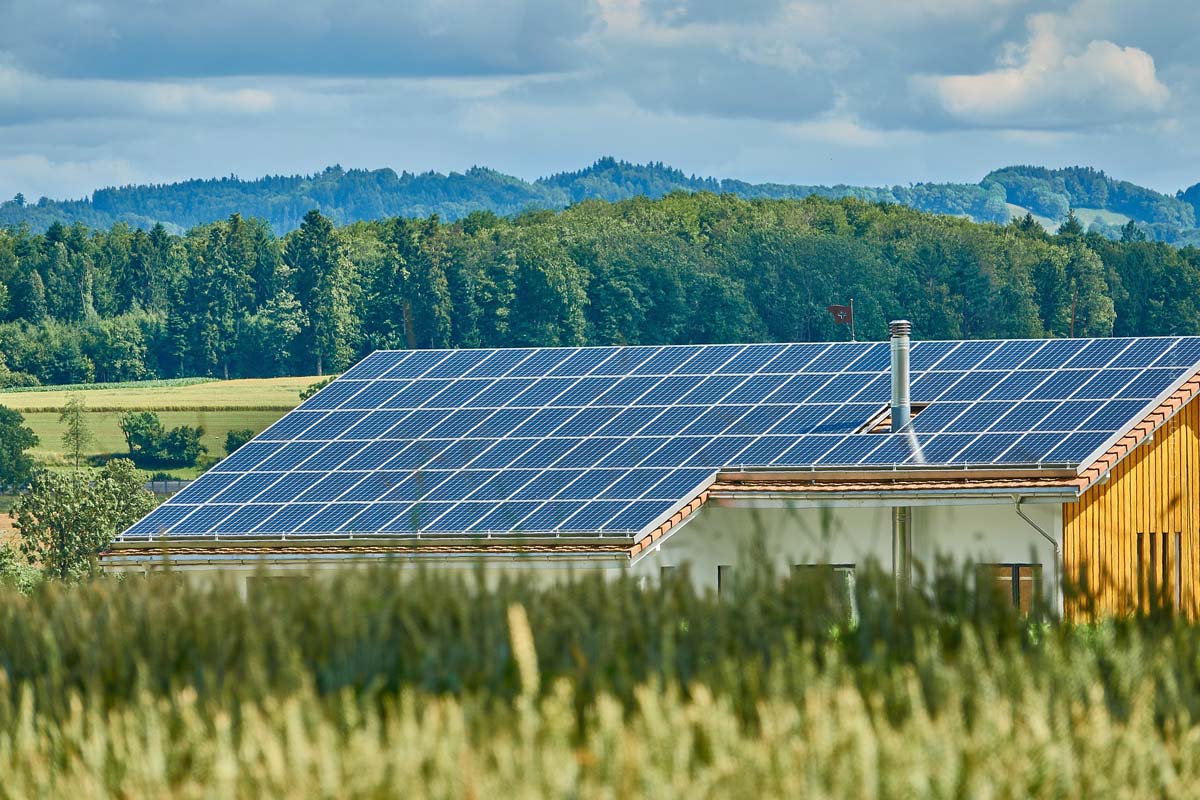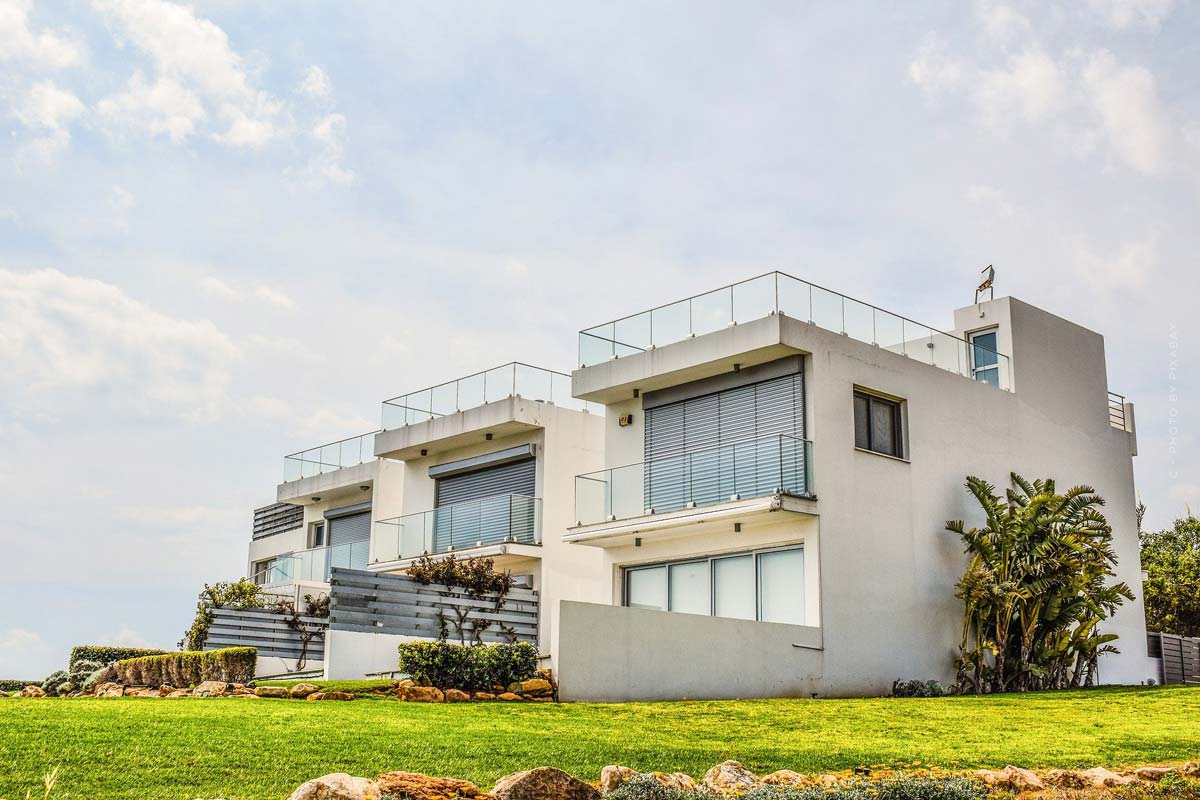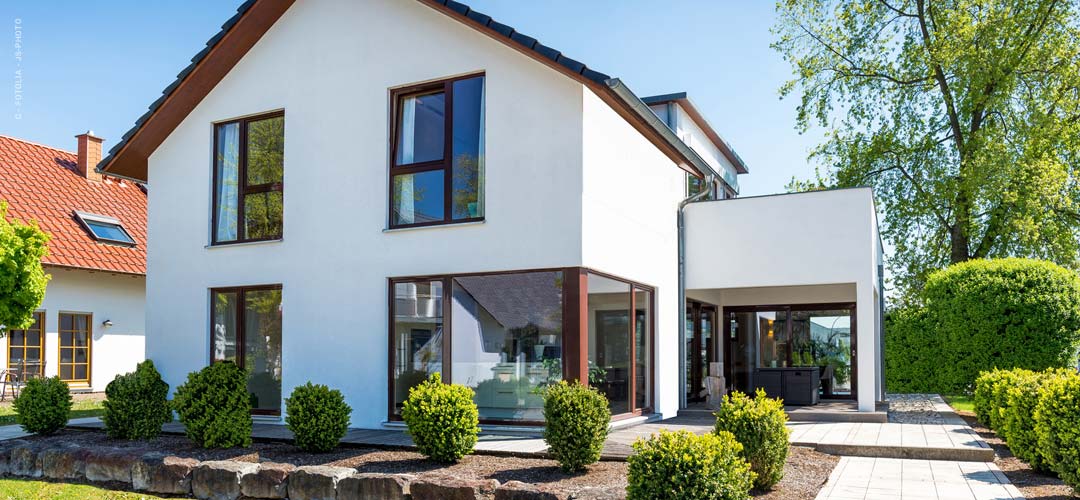Solar system: Retrofit and improve – What homeowners need to consider
Retrofit solar system – The green revolution on German house roofs is in full swing. But low-energy houses are also very much in vogue. This is due not only to increased environmental awareness, but also to massively rising energy prices. More and more homeowners are therefore turning to solar energy systems on their roofs. In the long term, such a system promises not only cheaper electricity and greater independence from politics and utilities, but also a valuable contribution to climate protection – including attractive subsidies from the German government. But is retrofitting possible at all? And what do you have to watch out for? We have the most important answers.
When to retrofit a solar system and when not to?
The most important answer first: Retrofitting a solar system to existing buildings is possible at any time. Even if the effort for the realization seems to be very high, photovoltaic retrofitting has become a standard procedure that solar experts deal with on a daily basis. The actual procedure works, as far as planning and installation are concerned, in a similar way as for a new building.
The decisive factor for retrofitting a solar system is the possible electricity yield. The retrofit is only worthwhile if the installed system receives sufficient sunlight over the course of the year. The basis for such a consideration is a demand calculation. This takes into account the previous electricity consumption in kilowatt hours and serves to determine how large the photovoltaic system on the roof must be dimensioned.
If the building roof is shaded for large parts of the day due to an unfavorable location between buildings or trees, retrofitting a PV system is not worthwhile. This also applies if the roof surfaces are unfavorably oriented or too steep. Since slope and orientation are locally very individual, the analysis of a solar professional is essential. However, the following information can provide initial indications.
Retrofit criteria
Here are the criteria for when you can retrofit your roof with a solar system without any problems, in brief:
- Feasible with standard procedures by experts
- Works similar to new construction
- Worthwhile when there is enough sunlight
- Carry out requirements calculation
What requirements should my roof have?
A roof area that is as large as possible and faces south is ideal for retrofitting a PV system. However, roofs with an east-west orientation also have the potential to produce large amounts of electricity. However, solar experts like EWE-Solar can also plan systems in such a way that an effective power supply is possible through simultaneous occupancy in east-west as well as north orientation.
If possible, the roof surfaces should not be shaded or should not be exposed to shade for as much of the day as possible. An ideal electricity yield during the course of the day can be achieved with roofs that have an inclination between approx. 30 and 40 degrees.
Requirements of my roof
What should my roof optimally bring?
- Large roof area
- Optimal: orientation to the south
- All right: east-west orientation
- No shading
- Inclination between 30 and 40 degrees

What do I always have to consider when retrofitting?
Retrofitting a solar system is an investment that will only pay off in the medium or long term. Accordingly, it is important that you rely on solid financing for the project. It takes several years until the point is reached where the saved energy costs exceed the investment sum including interest. When it comes to retrofitting a PV system, false economy is also out of place. Do not make the mistake of planning too tightly and without reserves. A slightly larger sized system is always the better option. It ensures that the supply is covered even if the energy demand increases in the future.
What if you decide to buy a sauna or an electric vehicle? If the system is too small, you would once again be dependent on mains electricity. The same applies to making the most of low solar radiation, e.g. in autumn and winter. The larger the system, the more energy it can generate even in poor conditions.
Tip: Installing a home storage system (home battery) makes it possible to store electrical energy that is currently being generated but not consumed. This is then available, for example, at night or on dark days.
More tips for retrofitting solar systems
1. mounting system: Each roof and each location offer different conditions for the roof installation. Accordingly, ask your installer for advice on the ideal mounting system. This should be adapted to the weather and weather conditions (wind and snow load).
2. caution: scaffolding is required: solar systems are usually installed at heights of more than 1.5 meters above ground level. Please note that the law requires the erection of scaffolding in this case.
3. timing: You can certainly have a PV system retrofitted at any time. However, since the area around the house is at least temporarily transformed into a construction site, the ideal time is when the roof is due for renovation anyway. This way, the solar installer can also use the standing scaffolding.
4. use additional space: The solar modules do not necessarily all have to be mounted on the roof. If there is not enough space for the desired dimensions, additional solar modules can also be installed on garages, canopies, etc.
5. compare offers: Retrofitting a PV system is a very individual matter. Accordingly, it is advisable to seek advice from several specialist companies and to submit an offer. Often, not only the prices differ, but also the individual solutions.
Conclusion: Is retrofitting solar systems worth it?
Retrofitting a PV system is easily possible on most roofs. Even in the case of shading or unfavorable roof orientations, PV experts can make the most of the situation. This means that nothing stands in the way of the dream of low-cost electricity from one’s own roof, even for owners of existing properties. But that’s not all: depending on the type and dimensions of the PV system, attractive subsidies are available.













